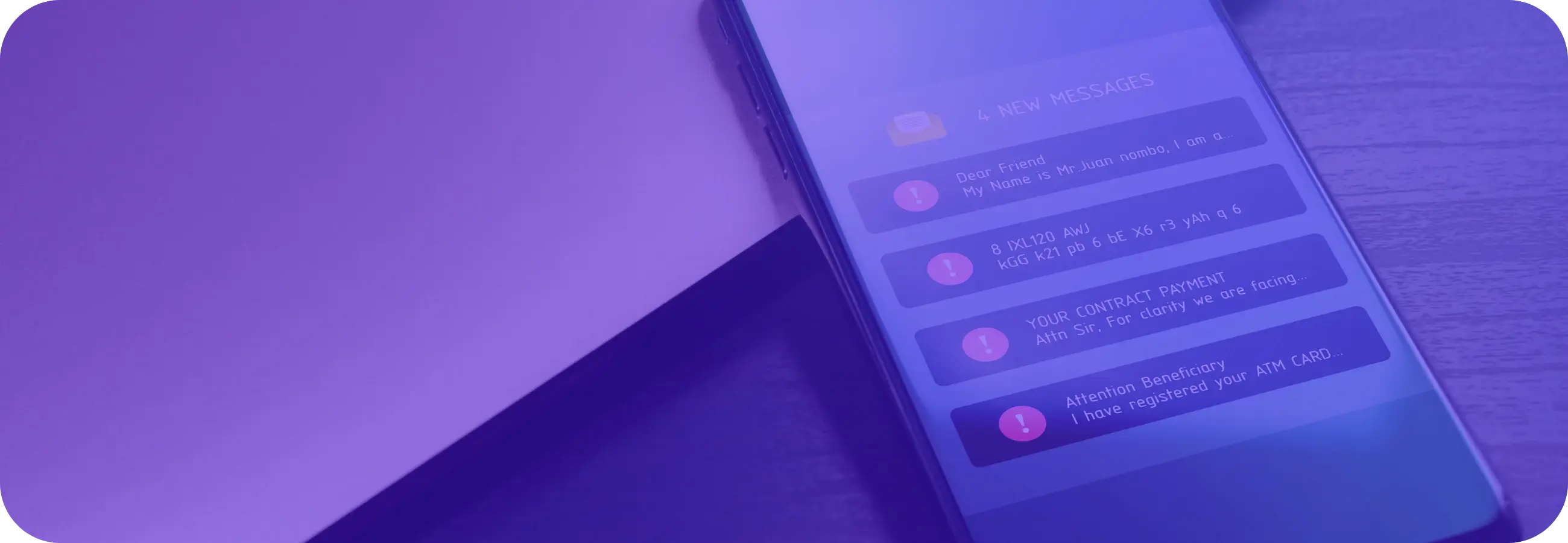With hackers targeting exclusive content and user data, it’s time to revisit your app security.
Streaming media has revolutionized the entertainment industry, giving consumers unparalleled choice and convenience. Major players like Amazon Prime Video, Disney+, Netflix, Hulu, and Max dominate the subscription video on demand (SVoD) space, while music streaming giants like Spotify, Apple Music, YouTube Music, and Deezer attract millions of subscribers with their vast content libraries.
But this success has also made these over-the-top (OTT) platforms prime targets for cybercriminals looking to exploit vulnerabilities and steal valuable intellectual property. In this wild west of digital media, app shielding has emerged as a critical line of defense, protecting content, safeguarding user data, and ensuring the integrity of the streaming ecosystem.
Looking to cover all your app security bases? Our guide to the OWASP Top 10 and app shielding will help you get started with a more robust security strategy. Download it now!
The streaming threat landscape
The movies, shows, music, and other content housed within streaming apps are the core assets of your services. Protecting this intellectual property from theft and unauthorized distribution is essential to maintain competitive advantage, retain subscribers, and uphold licensing agreements with content creators.
Let's explore more critical aspects of streaming app security:
Data breaches: When user data goes public
Beyond content, streaming apps handle a treasure trove of sensitive user information, including names, email addresses, viewing histories, and payment details. A data breach exposing this information could lead to reputational damage, subscriber churn, and hefty fines under data protection regulations like GDPR and CCPA.
According to IBM's Cost of a Data Breach Report, the average cost of a data breach is $4.88 million. For a major streaming service with millions of subscribers, even a 1% churn rate following a data breach could lead to major financial losses. On top of that, the fines imposed by data protection regulations can be substantial. Under GDPR, companies can face fines of up to €20 million or 4% of their global annual revenue, whichever is higher.
Content piracy: Attackers securing high-value content
For SVoD platforms, content piracy presents a persistent threat. Servers contain unreleased content, which if leaked, spreads to the black market before its official release and can have financial and reputational consequences.
Leading players invest in advanced content protection strategies to safeguard their exclusive releases. With each new title, these platforms employ stringent security to keep the content from leaking prematurely and spreading through unauthorized channels. This helps keep the content protected and maintain its value and ensure subscriber loyalty.
Unauthorized access: More than just annoyance for your subscribers
Even the giants still face challenges related to unauthorized access to user accounts. Password sharing and pirated login credentials dilute the value of the service and can strain infrastructure if left unchecked. It's critical to ensure users are who they say they are, reduce account sharing, prevent login credential reselling, and pay in full for your services.
Just a couple of years ago, Spotify reset passwords after a security vulnerability exposed users’ personal account information, including email addresses, usernames, passwords, gender, and dates of birth. While no unauthorized access was detected, the incident highlighted the importance of proactive security measures.
OTT apps: A complex environment with evolving risks
The complex architecture of OTT apps, spanning multiple devices and operating systems, provides a wide attack surface for cybercriminals. Every component—from the content delivery network to the client-side player—is a potential point of vulnerability.
Hackers are constantly probing for weaknesses, whether that's unsecured APIs, unpatched software vulnerabilities, or misconfigurations in cloud storage buckets. This makes comprehensive security crucial to maintain platform integrity and prevent data theft, content leakage, or system compromise.
Common risks and vulnerabilities in OTT streaming apps
The threat landscape for OTT apps is vast and constantly evolving. Let's take a closer look at some of the most common risks and vulnerabilities:
Data security nightmares: Exposing user information
Insecure data storage, weak encryption, misconfigured databases, and vulnerabilities like SQL injection can all compromise sensitive user information. Phishing attacks and social engineering can also trick users into revealing their login credentials. Attackers may try to access and sell this data on the dark web or use it for identity theft and fraud.
For example, a phishing campaign targeting YouTube influencers hijacked several accounts in 2020. Beyond technical safeguards, educating users and deploying social engineering protection is essential.
Digital rights management (DRM) gaps: Even the biggest platforms aren't immune
DRM is the frontline defense against content piracy, but it's not foolproof. Determined attackers may try to circumvent DRM protections by exploiting software vulnerabilities, reverse engineering app code, or using screen recording tools to capture content—making a multi-layered approach that includes app shielding measures ideal.
Case in point, in 2021, attackers stole and leaked more than 100 gigabytes of content from Amazon's Twitch game streaming platform, including unreleased projects and source code. The incident highlighted the constant threat of intellectual property theft.
User authentication flaws: The weak link in your chain
Weak password policies, lack of multi-factor authentication, and flaws in session management give attackers an easy path to user accounts. Credential stuffing attacks, where hackers use lists of stolen username and password combinations to get into accounts, are particularly common.
To counter this, implement robust authentication systems to prevent unauthorized access and protect user data by enforcing strong password mechanisms and multi-factor authentication. Regular auditing and testing of these systems ensure a secure environment for subscribers, while features like rate limiting help prevent brute-force attacks.
Client-side risks: Compromising devices, not just apps
Securing the streaming app itself is only half the battle. Malware on a user's device, whether it's a smart TV, smartphone, or laptop, can also compromise the security of the streaming service. Keyloggers can capture login credentials, screen capture tools can record content, and rooted or jailbroken devices can bypass security measures like root detection and tamper prevention.
Attackers may also try to sideload modified versions of streaming apps with DRM protections removed. To counter these threats, app shielding techniques help strengthen app integrity on all devices. Obfuscating code, employing runtime application self-protection (RASP), and using white-box cryptography are effective methods to prevent tampering.
Real-world examples: When attacks hit streaming services
These threats aren't just theoretical. Here are some attacks that took place over the last few years:
- In 2017, a hacker allegedly stole and released a few episodes of Netflix's Orange Is the New Black ahead of its premiere.
- In 2019, a hacking group accessed Disney+ accounts using credentials stolen from other sites. They then sold access to the hijacked accounts for $3-$11 each.
- In 2017, hackers breached HBO's network and stole 1.5 terabytes of data. This led to popular shows like Game of Thrones appearing online before their official release.
How to secure your streaming app with app shielding
The secure software development lifecycle (SSDLC)
Integrating security into every stage of the app development process—from initial design through deployment and maintenance—is crucial for building resilient streaming apps. The SSDLC provides a framework for consistently applying security best practices throughout the software development lifecycle.
For OTT apps, this means considering the unique challenges of video streaming from the outset. Architects and developers need to design the app with security in mind, choosing robust DRM solutions, adopting secure coding practices, and using encryption to protect sensitive data.
Threat modeling exercises can help identify potential vulnerabilities and attack vectors early in the development process, when they're easier and less expensive to fix. Static code analysis tools can also catch common security flaws before they make it into production.
Encryption is key
Encryption using industry-standard algorithms like AES-256 helps secure sensitive information, including login credentials, personal details, and payment information.
Data should be encrypted at rest—when it's stored on servers or user devices, and in transit—when it's being transmitted over the internet. Secure communication protocols like transport layer security (TLS) help protect data in transit from man-in-the-middle attacks and eavesdropping.
Secure storage protocols
Streaming apps often cache video content on user devices to enable offline viewing and reduce bandwidth consumption. But this cached content is a prime target for attackers looking to bypass DRM protections and pirate content.
Secure storage protocols can mitigate this risk by encrypting cached content and storing it in protected containers. Obfuscation techniques also make it harder for attackers to reverse engineer the app and locate the cached files. Jailbreak and root detection security features can prevent the app from running on compromised devices, where attackers may have more tools to bypass secure storage and extract content.
Secure and encrypted backups
Regular, secured backups of app data and configurations provide a safety net in the event of a breach, ransomware attack, or data loss incident. Encrypted backups should be stored in a separate, secured location from production systems. You can also automate backups and testing the restore process to ensure that the app can quickly recover from an incident with minimal data loss or downtime.
Fortifying your content
While a DRM helps prevent unauthorized access and distribution of video content, savvy pirates can still find ways to bypass it by exploiting software vulnerabilities and screen capture tools.
To protect your content, you need a multi-layered approach by:
- Implementing industry-standard DRM systems to encrypt video streams and control access based on user permissions and device limitations.
- Using forensic watermarking to imperceptibly embed identifying information into each video stream, making it possible to trace leaks back to the source device or user account.
- Leveraging server-side analytics to monitor for suspicious activity like abnormal viewing patterns or simultaneous streams from geographically distant locations, which could indicate credential sharing or a compromised account.
- Geoblocking content based on the user's IP address to enforce regional licensing restrictions and prevent VPN-based access from unauthorized locations.
User authentication & authorization
Securing user accounts is critical to prevent unauthorized access, protect personal information, and enforce content permissions. A robust authentication and authorization framework is the foundation of this security.
Enforcing strong password policies that require a minimum length and complexity, encouraging the use of password managers, and multi-factor authentication can be made mandatory for sensitive actions like changing account details or making purchases.
Streaming apps can take cue from Netflix’s account security policies that use authorization systems to ensure users can only access the content and features they’ve subscribed to and have account-level permissions. The company regularly audits and tests these systems to catch vulnerabilities.
Implementing rate limiting and CAPTCHAs can also help prevent brute force attacks and credential stuffing, while anomaly detection algorithms can flag suspicious login attempts or unusual account activity for further investigation.
Client-side security
Even with robust server-side security controls, streaming apps can still be vulnerable to client-side attacks. Attackers may try to reverse engineer the app code, tamper with the runtime environment, or inject malicious code to bypass security measures and extract content or sensitive data.
App shielding techniques like the following can harden the app against these attacks:
- Obfuscating the app code to make it harder to understand and modify, using identifier renaming, control flow flattening, and string encryption.
- Implementing runtime application self-protection (RASP) to detect and respond to runtime attacks like debugging attempts, code injection, or API hooking.
- Using white-box cryptography to protect sensitive cryptographic keys and operations from reverse engineering and tampering, even if the attacker has full access to the app code and runtime environment.
- Leveraging the hardware-based security features of modern devices, including secure enclaves and trusted execution environments, to create a tamper-resistant environment for sensitive operations.
- Regularly conducting penetration testing and security audits to identify and remediate vulnerabilities in the app code, third-party libraries, and runtime environment.
What to look for in an app shielding provider
With the stakes so high, choosing the right app shielding solution is important to protect your streaming app and intellectual property. Here are some key factors to consider when evaluating app shielding providers:
- Experience and expertise: Look for a provider with experience in securing streaming apps with a thorough understanding of the unique challenges and threats facing the streaming industry.
- Comprehensive protection: The solution should offer a full range of app shielding techniques, including code obfuscation, runtime protection, white-box cryptography, and tamper detection. It should also integrate seamlessly with your chosen DRM and content protection solutions.
- Cross-platform support: Because streaming apps run on various devices—from smart TVs to mobile phones—the app shielding solution needs to provide consistent protection across all environments. Look for a provider that supports the latest versions of Android, iOS, and major smart TV platforms.
- Standards compliance: The provider should adhere to industry best practices and standards for secure coding, like the OWASP Mobile Application Security Verification Standard (MASVS) and NIST cybersecurity framework, and comply with relevant regulations like GDPR, HIPAA, and PCI DSS.
- Transparent and auditable: The provider should be transparent about their security practices, with clear documentation and regular security audits by independent third parties. They should also provide detailed reporting and analytics to help you understand the state of your app security and identify potential issues.
- Seamless integration and scalability: The app shielding solution should integrate seamlessly into your existing development workflow and toolchain, without requiring significant changes or slowing down the development process. It should be able to scale as your app grows and evolves.
- Performance optimization: The solution should be tuned to your specific environment and performance requirements, ensuring it remains invisible to the end user. Look for a provider that can deliver robust protection while minimizing the impact on app performance and user experience.
By partnering with a trusted app shielding provider that meets these criteria, you can ensure that your streaming app has the strongest possible protection against the ever-evolving threat landscape.
Want to strengthen your streaming app's security from all angles? Get started with our guide on the OWASP Top 10 and app shielding essentials for a more resilient security approach. Download your copy today!




